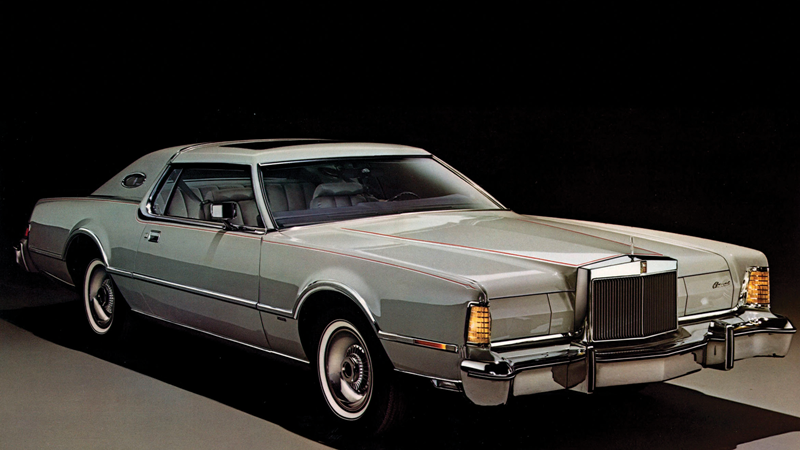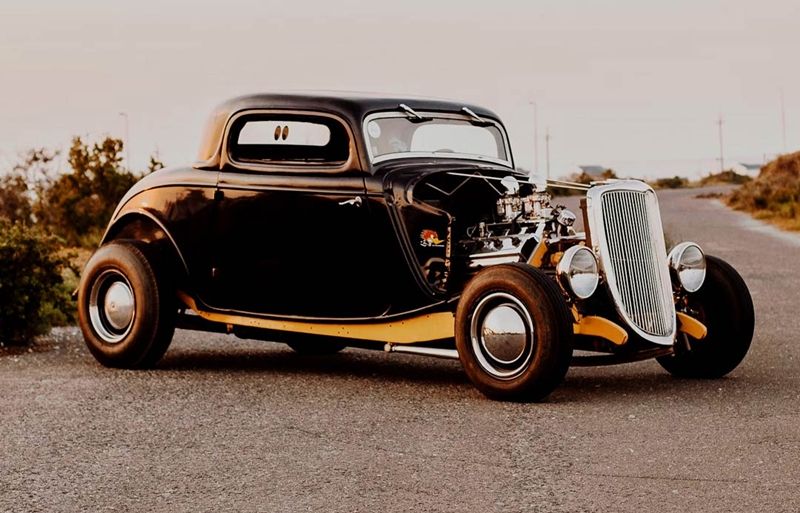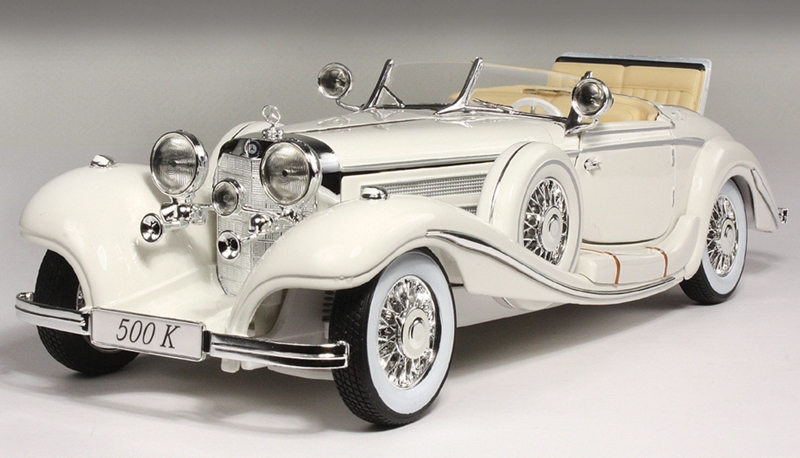What comes to mind when you hear “malaise era cars”? Sluggish performance? Questionable styling? While these stereotypes aren’t entirely unfounded, the story of American automobiles from roughly 1973 to 1983 is far more complex and fascinating than most people realize.
Table of Contents
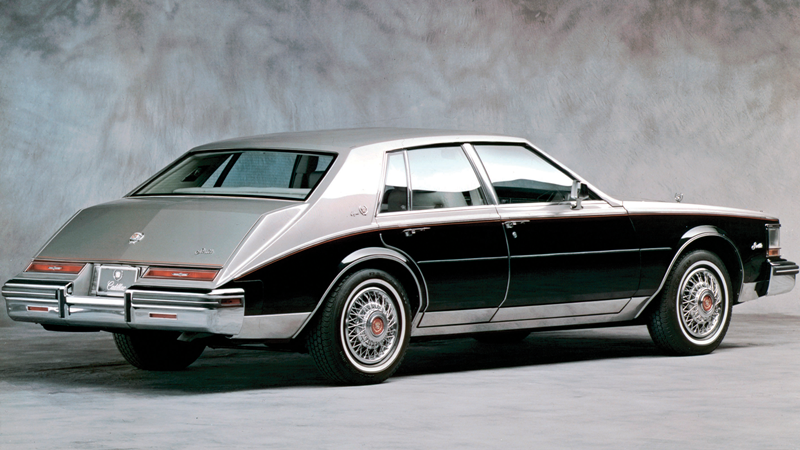
10 Shocking Truths About Malaise Era Cars That Will Transform Your Worst Assumptions
Ready to have your mind blown? These ten revelations about malaise era cars will completely change how you view this misunderstood automotive period. Prepare to question everything you thought you knew!
1. Some Malaise Era Cars Were Actually Faster Than You Think The 1979 Ford Mustang Turbo could accelerate from 0-60 mph in 8.4 seconds – faster than many modern economy cars! The Buick Grand National from 1982 could outrun Corvettes of the same era. The problem wasn’t that these cars couldn’t be fast; it’s that most manufacturers prioritized fuel economy over performance due to market demands.
2. Modern Turbocharging Technology Was Perfected During This Period
Think turbocharging is new? Malaise Era cars like the Saab 99 Turbo (1978) and Buick Regal Turbo (1978) pioneered reliable turbocharged engines for mass production. These weren’t crude experiments – they were sophisticated systems that directly influenced today’s downsized, turbocharged engines in everything from Ford EcoBoost to BMW’s entire lineup.
3. The Horsepower Numbers Were Deliberately Misleading
Here’s the kicker: when the industry switched from “gross” to “net” horsepower ratings in 1972, Malaise Era cars appeared to lose 50-100 horsepower overnight without any actual performance loss! A 1971 Corvette rated at 330 gross hp was essentially the same as a 1972 Corvette rated at 200 net hp. The numbers fooled everyone, including automotive journalists.
4. Malaise Era Vehicles Pioneered Nearly Every Modern Safety Feature
Anti-lock brakes, airbags, crumple zones, side-impact protection, and energy-absorbing steering columns all became standard during this period. Malaise Era cars like the 1974 Oldsmobile Toronado, which was the first with a passenger airbag, led the way. These innovations saved countless lives and became the foundation for today’s incredibly safe vehicles.
5. Some Malaise Era Car Designs Were Decades Ahead of Their Time
The AMC Eagle (1980), a standout among Malaise Era cars, was essentially the first modern crossover SUV – 15 years before the term was even coined! The Ford Probe concept influenced aerodynamic design for decades. Even the maligned AMC Pacer featured advanced ergonomics and visibility that wouldn’t become common until the 1990s.
6. Fuel Injection Became Mainstream Because of This Era
Electronic fuel injection, now universal, became practical during the Malaise Era out of necessity. Malaise Era cars like the 1975 Cadillac Seville featured Bosch fuel injection, and by 1982, GM’s Throttle Body Injection was appearing across their lineup. This technology directly enabled the performance and efficiency of every modern car.
7. The Best-Selling Cars of the Era Were Actually Pretty Good
The Oldsmobile Cutlass was America’s best-selling car for four consecutive years (1976–1979) because it genuinely delivered what buyers wanted: reasonable fuel economy, comfort, reliability, and style. Many Malaise Era cars, like the Ford Fairmont, sold millions because they were fundamentally sound—not because buyers had no choice.
8. Foreign Cars Had Just as Many Problems
While Japanese cars gained a reputation for reliability, early Honda Civics rusted catastrophically, Volkswagen Rabbits had electrical nightmares, and Audi 5000s had deadly unintended acceleration issues. The grass wasn’t necessarily greener on the foreign side – American Malaise Era cars just got more criticism for their failures.
9. Environmental Regulations Actually Spurred Innovation
Rather than killing automotive progress, emissions standards forced breakthrough innovations. Malaise Era cars brought us catalytic converters, computer-controlled carburetors, and precision engine management systems. These technologies made cars cleaner and more efficient than ever before.
10. Many Malaise Era Vehicles Are Now Appreciating Collectibles
Clean examples of once-scorned vehicles are becoming valuable! A pristine 1979 Pontiac Trans Am, one of the most iconic Malaise Era cars, can sell for $30,000+. AMC Pacers are fetching serious money, and even well-preserved Ford Pintos are finding collectors. The market has recognized what enthusiasts already knew – these cars represent fascinating automotive history.
The term “malaise era” itself comes from President Jimmy Carter’s famous 1979 speech about America’s “crisis of confidence,” though he never actually used the word “malaise.” This period represents one of the most challenging and transformative decades in automotive history, when manufacturers were forced to completely reimagine what cars could and should be.
Why should you care about these often-overlooked malaise era cars? Because understanding these vehicles gives us incredible insight into how external pressures can reshape an entire industry overnight. These weren’t just cars – they were symbols of adaptation, innovation under constraint, and the birth pangs of the modern automotive world.

The Perfect Storm: What Created the Malaise Era?
The malaise era didn’t happen in a vacuum. Multiple factors converged in the early 1970s to create an unprecedented challenge for American automakers. Can you imagine trying to redesign your entire product line while dealing with fuel shortages, new safety regulations, and emissions standards all at once?
The 1973 oil crisis hit like a thunderbolt. Overnight, gas prices skyrocketed, and Americans found themselves waiting in long lines at gas stations. Those massive, thirsty V8 engines that had defined American automotive culture suddenly seemed absurd. Manufacturers scrambled to create smaller, more efficient engines, often with mixed results.
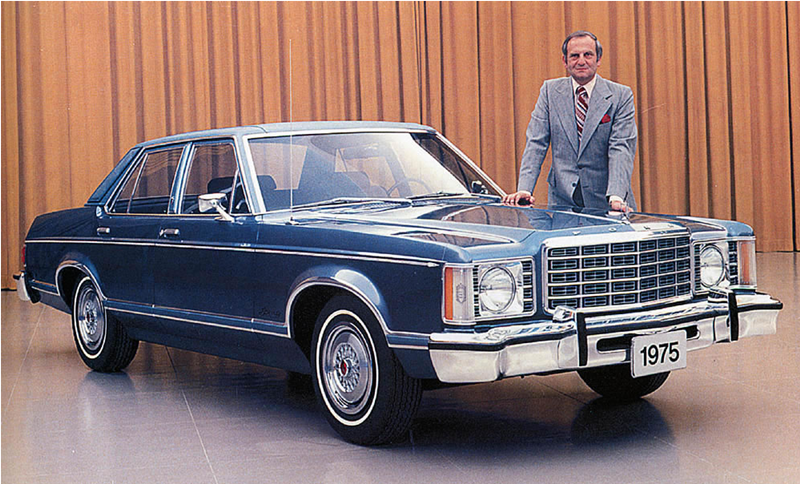
Meanwhile, the newly formed Environmental Protection Agency introduced strict emissions standards through the Clean Air Act. The catalytic converter became mandatory in 1975, but early versions were crude and power-robbing. Engineers had to learn entirely new ways of tuning engines, often sacrificing performance for compliance.
Safety regulations added another layer of complexity. The National Highway Traffic Safety Administration mandated features like energy-absorbing bumpers, side-impact protection, and eventually airbags. These requirements added weight and cost while forcing designers to completely rethink vehicle architecture.

Design Disasters or Misunderstood Masterpieces?
Let’s be honest – some malaise era cars were genuinely awkward. The AMC Pacer looked like a fishbowl on wheels, and the Chevrolet Chevette felt like it was built from recycled tin cans. But were these vehicles really as bad as their reputation suggests?
Actually, many malaise era cars were remarkably innovative when you consider the constraints their designers faced. The Ford Mustang II, often criticized for being too small and underpowered, actually saved the Mustang nameplate from extinction. Without this downsized version, Ford might have discontinued the model entirely during the fuel crisis.
Also read: 7 Mind-Blowing Auto Innovations Changing the Way We Drive
The Pontiac Fiero represents another misunderstood chapter. Yes, early models had reliability issues, but they pioneered the use of plastic body panels and space frame construction that would later influence sports car design for decades. Sometimes innovation comes with teething problems!
Even the much-maligned Cadillac Cimarron, despite being an obvious badge-engineering exercise, represented GM’s first serious attempt at competing with European luxury compacts. The execution was flawed, but the strategy would eventually prove prescient as luxury car buyers increasingly demanded smaller, more efficient vehicles.
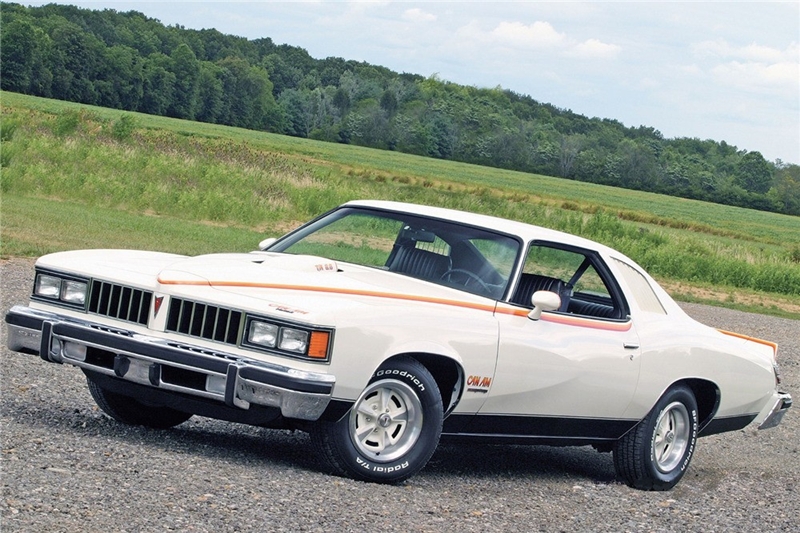
Performance in the Age of Regulation
Here’s where malaise era cars really struggle in public perception – performance. Iconic muscle cars that once produced 400+ horsepower were suddenly making 140 horsepower or less. The Chevrolet Corvette, America’s sports car, limped through 1975 with just 165 horsepower. What happened?
The answer lies in how horsepower was measured and reported. In 1972, the industry switched from gross horsepower (measured without accessories or exhaust systems) to net horsepower (measured as installed in the car). This change alone made engines appear significantly less powerful on paper, even when actual performance remained similar.
Emissions controls certainly didn’t help. Early catalytic converters, exhaust gas recirculation systems, and air pumps all robbed power. But here’s what’s fascinating – engineers gradually learned to work within these constraints. By the late 1970s, some malaise era cars were actually producing respectable power while meeting all regulations.
The Buick Grand National, introduced in 1982, proved that performance wasn’t dead. This turbocharged monster could outrun contemporary Corvettes while achieving reasonable fuel economy. It demonstrated that the malaise era was ending and a new age of efficient performance was beginning.
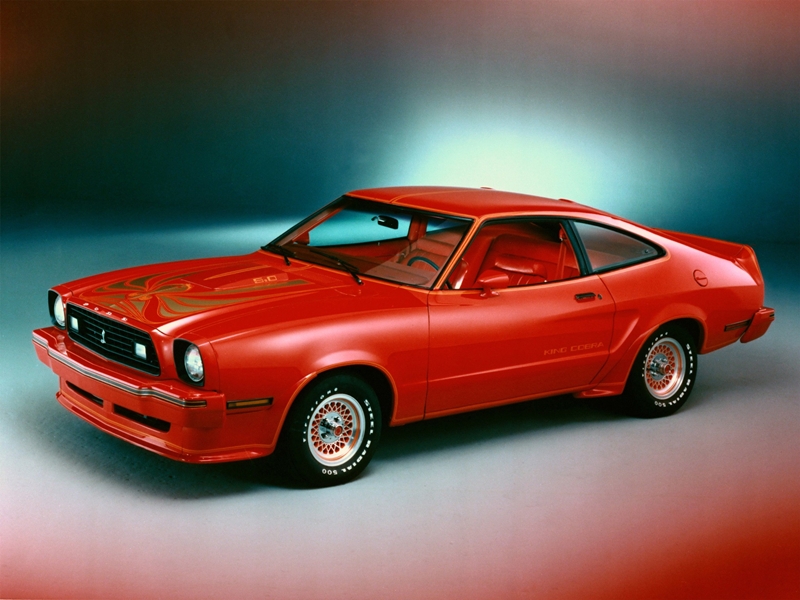
Hidden Gems: The Malaise Era Cars That Got It Right
Not all malaise era cars were disasters waiting to happen! While the period produced its share of automotive embarrassments, several vehicles managed to excel despite the challenging circumstances. These hidden gems prove that good engineering and thoughtful design could overcome even the most restrictive regulations.
The Dodge Omni/Plymouth Horizon (1978–1990) – Often overlooked, these European-influenced compact cars were genuinely excellent. As standout Malaise Era cars, they showcased Chrysler’s European engineering expertise with outstanding fuel economy, surprisingly good handling, and remarkable reliability. The later GLH (Goes Like Hell) versions even provided legitimate performance thrills! Why did they succeed when so many others failed? Simple—they were designed from the ground up for the new automotive reality rather than being compromised adaptations of older designs.
The Ford Fairmont (1978–1983) – Yes, really! While it looked plain and uninspiring, the Fairmont was actually a brilliant piece of engineering. As one of the more underrated Malaise Era cars, its Fox platform would later underpin the successful Mustang for decades. The car offered excellent fuel economy, decent performance with the right engine, and surprising durability. Many examples are still running today, which says something about their fundamental soundness.
The AMC Eagle (1980–1987) – Talk about being ahead of its time! The Eagle was essentially the first modern crossover SUV, combining car-like handling with all-wheel-drive capability decades before it became trendy. Among Malaise Era cars, the Eagle was a genuine trailblazer. While AMC’s limited resources showed in some areas, its innovative concept and capable performance made it a standout. Today’s crossover-obsessed market proves that AMC was onto something special.
The Buick Skylark X-Body (1980–1985) – Not the troublesome Citation, but specifically the Buick version with the Iron Duke four-cylinder engine. As one of the more overlooked Malaise Era cars, the Skylark offered excellent fuel economy, surprising durability, and decent performance when properly maintained. The key was avoiding the problematic V6 engines that plagued other X-body variants.
The Datsun 280ZX (1979–1983) – While technically a Japanese import, the 280ZX deserves mention for showing American manufacturers what was possible during the era. It combined legitimate sports car performance with excellent fuel economy and reasonable emissions compliance. Even though it wasn’t made in Detroit, it stood alongside the best Malaise Era cars by excelling in every metric the era demanded. The fact that it succeeded where so many American sports cars failed provided valuable lessons for domestic automakers.
The Chevrolet Monte Carlo (1978–1988) – The downsized Monte Carlo proved that full-size American luxury could work in the new automotive landscape. Among Malaise Era cars, it offered smooth highway cruising, respectable performance in SS trim, and reasonable fuel economy—without losing its traditional American charm. Buyers appreciated that they didn’t have to sacrifice style and comfort completely during this transitional automotive period.
Innovation Born from Necessity
Necessity truly is the mother of invention, and malaise era cars showcased this principle beautifully. Faced with seemingly impossible demands for better fuel economy, lower emissions, and improved safety, engineers developed technologies we still use today.
Fuel injection began its mainstream adoption during this period. While mechanical fuel injection had existed since the 1950s, electronic fuel injection systems became practical alternatives to carburetors. These systems offered precise fuel metering that helped engines meet emissions standards while improving driveability.
Turbocharging experienced a renaissance as manufacturers sought to extract more power from smaller engines. The Saab 99 Turbo and Buick Regal Turbo showed that forced induction could deliver V8-like performance from four-cylinder engines. This technology would become crucial in our modern era of downsized, turbocharged engines.
Aerodynamics suddenly mattered in ways they never had before. The Ford Thunderbird’s dramatic redesign for 1977 reduced its drag coefficient significantly, improving fuel economy without sacrificing interior space. This focus on aerodynamic efficiency would reshape automotive design philosophy for decades to come.
The Transition Years: Finding Light in the Darkness
By the early 1980s, the worst of the malaise era was ending, but the lessons learned from Malaise Era cars were just beginning to pay dividends. These vehicles had forced engineers and manufacturers to confront challenges they had previously ignored, and the resulting innovations would shape the automotive future.
Computer-controlled engine management systems, first tested and refined in Malaise Era cars, became sophisticated enough to optimize both performance and emissions simultaneously. These systems laid the groundwork for today’s powerful yet efficient drivetrains.
The introduction of overdrive transmissions gave drivers better highway fuel economy without sacrificing acceleration. Four-speed automatics became common, and five-speed manual transmissions offered enthusiasts more precise control over engine operation—another legacy of adapting to the limitations experienced during the development of Malaise Era cars.
Materials science also advanced rapidly as manufacturers sought lighter, stronger components. The use of aluminum, advanced plastics, and high-strength steel—initially explored to offset the weight added by early emissions and safety equipment—would eventually enable the creation of vehicles that were simultaneously safer, more efficient, and better performing than their predecessors.
Perhaps most importantly, American manufacturers began studying and learning from their foreign competitors. Japanese and European automakers had been addressing fuel efficiency and emissions challenges longer, and their solutions began influencing domestic designs. The painful evolution of Malaise Era cars made this cross-pollination not just possible—but necessary.
Chart: Fuel Economy Improvements During the Malaise Era

Regional Variations: How Different Markets Adapted
Not all malaise era cars were created equal, and regional differences played a significant role in their development. California’s stricter emissions standards meant that cars sold there often had different engine calibrations or equipment compared to those sold in other states.
European-influenced designs began appearing more frequently in American showrooms. The Ford Fiesta, Chevrolet Chevette (based on the Opel Kadett), and Dodge Omni/Plymouth Horizon (developed with European partners) represented new approaches to small car design that American manufacturers were still learning to execute properly.
Interestingly, some of the most successful malaise era cars were those that embraced their limitations rather than fighting them. The Volkswagen Rabbit (Golf) became incredibly popular not despite its modest performance, but because it offered excellent fuel economy, practical packaging, and reliable operation within its intended role.
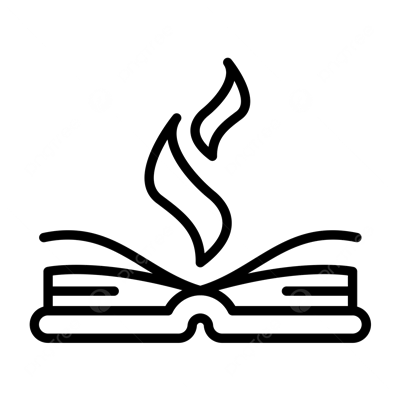
Malaise Era Myths vs. Reality: Setting the Record Straight
Let’s bust some persistent myths about malaise era cars that continue to cloud people’s judgment. These misconceptions have become so widespread that they’re often accepted as fact, but the reality is far more nuanced and interesting!
Myth #1: All Malaise Era Vehicles Were Slow
Reality: While many were indeed slower than their predecessors, the story is complicated. The 1979 Mustang Turbo could hit 60 mph in under 9 seconds – respectable for the era. The real issue was that performance standards had been reset by regulations, not that engineers forgot how to build fast cars. Plus, remember that horsepower ratings switched from gross to net in 1972, making engines appear weaker on paper even when actual performance was similar.
Myth #2: They Were All Unreliable Junk
Reality: Some malaise era vehicles were actually more reliable than their muscle car predecessors! The simpler emissions systems of the late 1970s, once engineers figured them out, often proved more durable than the complex mechanical systems they replaced. Many Ford Fairmonts, Dodge Omnis, and even some GM X-bodies are still running today with basic maintenance.
Myth #3: Foreign Cars Were Always Better
Reality: While Japanese cars gained a reputation for reliability, many European cars of the era had their own significant problems. British cars were notoriously unreliable, Italian cars rusted aggressively, and even some Japanese models had issues. The Audi 5000’s unintended acceleration problems and various Volkswagen reliability issues prove that foreign didn’t automatically mean better.
Myth #4: All the Styling Was Terrible
Reality: This is purely subjective, but many malaise era cars featured clean, purposeful designs that have aged better than expected. The 1979 Mustang’s sharp-edged styling looks remarkably modern today, and cars like the Monte Carlo and Cutlass Supreme had an elegant formality that many buyers appreciated. Sometimes “boring” actually means “timeless.”
Myth #5: No Innovation Happened During This Period
Reality: The malaise era was actually one of the most innovative periods in automotive history! Electronic fuel injection, turbocharging, advanced aerodynamics, lightweight materials, and computer-controlled engine management all became mainstream during this time. These weren’t band-aids on bad designs – they were fundamental advances that shaped every car built since.
Myth #6: They Were Only Built to Meet Regulations
Reality: While regulations certainly drove development, many malaise era cars were designed to exceed minimum requirements and provide genuine customer value. The focus on fuel economy, for instance, saved buyers real money at the pump. Safety improvements saved lives. These weren’t just regulatory compliance exercises – they were attempts to build better cars for a changing world.
Collecting and Appreciating Malaise Era Cars Today
Here’s something that might surprise you – malaise era cars are becoming increasingly collectible! Values for clean examples of once-scorned vehicles like the AMC Pacer, Ford Pinto, and even the Chevrolet Vega are rising as enthusiasts begin to appreciate their historical significance.
What makes a malaise era car worth collecting? Rarity plays a role, as many of these vehicles were scrapped decades ago due to their poor reputation. Unusual options or trim levels can make common cars suddenly interesting. A well-preserved Pontiac Sunbird with the optional turbo engine is far more valuable than a standard model.
The key to appreciating malaise era cars lies in understanding their context. Judge them not against the muscle cars that came before or the refined vehicles that came after, but against the impossible standards they were asked to meet. When viewed through this lens, many of these malaise era vehicles represent remarkable achievements in engineering compromise.
FAQ: Everything You’ve Always Wondered About Malaise Era Cars
Q: What years exactly constitute the malaise era? A: While there’s no official definition, most automotive historians place the malaise era from approximately 1973 (the first oil crisis) to 1983 (when fuel injection and computer controls became widespread). Some extend it slightly in either direction.
Q: Were malaise era cars really as slow as people say? A: Many were genuinely slow by today’s standards, but the switch from gross to net horsepower ratings in 1972 made them appear worse on paper than they actually were. A 1979 Corvette with “only” 195 horsepower could still accelerate reasonably well.
Q: Why didn’t American manufacturers just copy successful foreign cars? A: They tried! The Chevrolet Chevette was based on a successful European design, but adapting cars for different markets, regulations, and consumer expectations proved more challenging than expected.
Q: Are any malaise era vehicles actually good investments? A: Some unusual or well-preserved examples are appreciating, particularly low-production models or those with historical significance. However, most should be bought for enjoyment rather than investment potential.
Q: What was the worst malaise era car ever made? A: That’s subjective, but the Cadillac Cimarron (a poorly disguised Chevrolet Cavalier) and AMC Pacer often top “worst of” lists. However, both have their defenders who appreciate their unique qualities.
Downloadable Resource: Malaise Era Car Buying Guide
Included in this comprehensive guide:
- Model-by-model breakdown of significant malaise era cars
- Common mechanical issues and solutions
- Parts availability and restoration resources
- Current market values and trends
- Tips for finding good examples
Final Thoughts: Rewriting the Narrative
The malaise era cars deserve better than their reputation suggests. Were they perfect? Absolutely not. But they represented American ingenuity under pressure, the beginning of our modern understanding of automotive efficiency, and the foundation upon which today’s excellent vehicles were built.
Every time you appreciate your car’s fuel injection system, turbocharged engine, or advanced safety features, remember that these technologies were pioneered or refined during those challenging years of the 1970s and early 1980s. The malaise era wasn’t just about what went wrong – it was about learning to do things differently.
Need a mechanic? Find one on the Mobile Mechanic Directory
Perhaps it’s time we stopped viewing malaise era vehicles as automotive failures and started seeing them as stepping stones to automotive excellence. After all, without the painful lessons learned during this period, we might never have achieved the remarkable combination of performance, efficiency, and safety that defines today’s automotive landscape.
The next time you see a tired-looking 1978 Ford Fairmont or a quirky AMC Spirit, take a moment to appreciate what it represents. These weren’t just cars – they were solutions to impossible problems, created by engineers who refused to give up when the entire industry was turned upside down. And that, perhaps, makes them more remarkable than any muscle car that came before.

